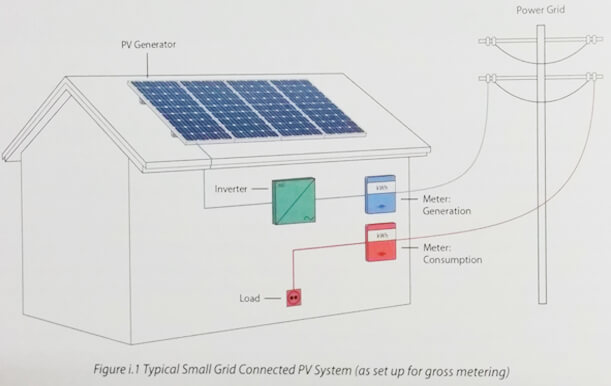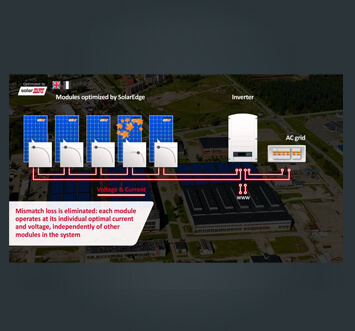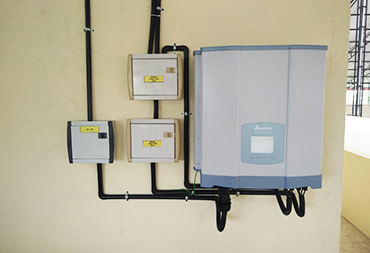As the world shifts towards sustainable energy, solar power has emerged as a key player in the renewable energy landscape. Among the various mechanisms that facilitate the integration of solar power into the grid, net metering and gross metering stand out as pivotal concepts. Both systems provide frameworks for compensating solar power producers, but they operate differently and have unique implications for both consumers and energy providers.
Net Metering: Balancing Production and Consumption
Definition: Net metering is a billing mechanism that credits solar energy system owners for the electricity they add to the grid. Essentially, it allows residential and commercial customers who generate their own electricity from solar power to feed excess electricity back to the grid and receive a credit on their electricity bill.
How It Works:
- Electricity Generation and Consumption:
(a), When a solar power system generates more electricity than the consumer
needs, the excess energy is sent to the grid.
(b), When the system generates less electricity than needed, the consumer draws
energy from the grid. - Metering:
(a), A bi-directional meter is installed to record the electricity flowing to and from
the grid.
(b), The meter runs forward when electricity is drawn from the grid and backward
when excess electricity is sent to the grid. - Billing:
(a), Consumers are billed for their “net” energy consumption, calculated as the
difference between the energy drawn from the grid and the energy sent to the
grid.
(b), If the consumer exports more than they import, they receive a credit that can
be applied to future bills.
Benefits:
Cost Savings:
(a), Reduces electricity bills by offsetting consumption with self-generated power.
(b), Excess energy credits can significantly lower future bills.
Incentivizes Renewable Energy Adoption:
Encourages the installation of solar power systems by making them financially
attractive.
Grid Stability:
Enhances grid stability by integrating distributed generation sources.
Challenges:
Grid Management:
Can complicate grid management, especially with high penetration of
distributed solar power.
Regulatory and Policy Variations:
Policies and rates vary by region, creating inconsistencies in how net metering
is implemented.
Gross Metering: Monetizing Solar Generation
Definition: Gross metering is a mechanism where all the electricity generated by a solar
power system is fed into the grid, and the consumer is paid a fixed rate for this electricity.
Simultaneously, all the electricity consumed by the consumer is drawn from the grid and
billed at the standard retail rate.
How It Works:
- Electricity Generation and Consumption:
(a), All electricity produced by the solar system is exported to the grid.
(b), The consumer purchases all their electricity needs from the grid. - Metering:
Two separate meters are used: one to measure the total electricity generated by
the solar system and another to measure the electricity consumed from the
grid. - Billing:
o Consumers receive payment for the total amount of electricity generated by
their solar system at a predetermined feed-in tariff.
o Consumers pay for all the electricity they consume at the retail rate.
Benefits:
Simplified Billing:
Clear separation between electricity generation and consumption simplifies
billing and payment processes.
Stable Revenue:
Provides a stable income for solar power producers through guaranteed feed-in
tariffs.
Grid Contribution:
Ensures a continuous contribution of renewable energy to the grid.
Challenges:
Initial Cost and ROI:
(a), Higher initial costs for system installation and metering equipment.
(b), Return on investment is highly dependent on the feed-in tariff rates set by
regulatory authorities.
Energy Independence:
Unlike net metering, consumers do not directly benefit from the electricity
they generate and must purchase all their energy from the grid, which might
not incentivize energy conservation as strongly.
Comparing Net Metering and Gross Metering
Consumer Perspective:
Net Metering:
Directly reduces electricity bills and provides an opportunity for energy
independence.
Gross Metering:
Offers a steady revenue stream but does not offset personal electricity
consumption.
Utility and Grid Perspective:
Net Metering:
Integrates distributed generation, which can aid in grid balancing but may
complicate grid management during peak generation times.
Gross Metering:
Simplifies grid operations with predictable solar power inputs but relies on
well-structured feed-in tariffs to maintain financial viability for solar
producers.
Regulatory and Policy Considerations:
Net Metering:
Requires policies that balance consumer benefits with grid stability and utility
revenue needs.
Gross Metering:
Necessitates fair and attractive feed-in tariffs to encourage solar power
adoption while ensuring grid contributions.
Conclusion
Both net metering and gross metering are crucial in the transition towards a sustainable
energy future, each offering unique advantages and challenges. Net metering promotes
energy independence and reduces consumer electricity costs, while gross metering provides a
straightforward revenue mechanism for solar power generation. The choice between these
systems depends on regional policies, grid infrastructure, and the specific needs of consumers
and utilities. Understanding these mechanisms helps stakeholders make informed decisions
that support the growth of renewable energy and the stability of the energy grid.







